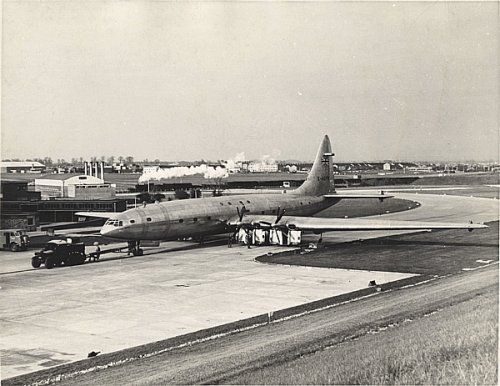
| The
Brabazon Hangar
Filton Bristol |
|
In 1943 Lord Brabazon
of Tara headed a Committee to explore
the needs of post war British civilian passenger airliners. The
Brabazon Report
was the result of the committee’s work, which recommended the
construction of four of the five designs under consideration. One of the designs
studied was awarded to The
Bristol
Aeroplane Company at Filton and the aircraft was named the Bristol
Type 167 Brabazon. Their contract was for the
construction of two prototypes of this aircraft . Work started on the
first aircraft in 1946
and it
was ready for its maiden flight in September 1949.
It visited the Farnborough Air Show the same month and was
demonstated at the Paris Air Show in 1951. This
large aircraft, which would become one of the largest in the world
required the existing 2000 foot runway at Filton to be lengthened
to 8000 feet, which meant the demolition and removal of a local village. The construction and assembly of this very large aircraft also required the construction of a similar large size assembly hall building. Construction of the building commenced in 1946 which was then the largest single span steel structure, (possibly in the World?). It comprised 3 separate bays, total length 352 metres, height at apex of bay 35 metre, total enclosed volume 1 million cubic metres. |
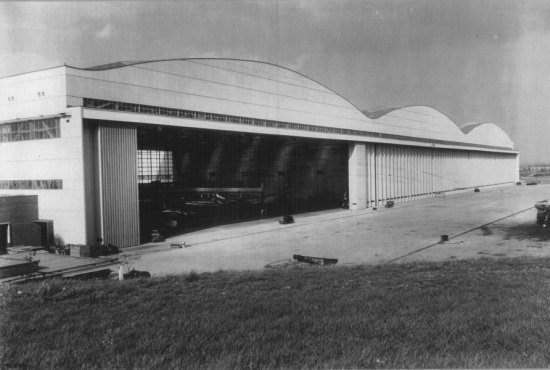 |
|
A major problem for the
assembly hall building was presented by the need to design an effective
and efficient
space-heating system. Under extreme winter conditions it was required
to raise
to comfort level the temperature of the enormous single air volume
contained
within the walls of the assembly hall. The design of the heating system
decided
upon had to ensure that no pipework of any kind could be buried in the
floor,
as the complete floor area had to be free of any restrictions placed
upon the
future fixing of any holding-down arrangements for plant and machinery. The heating and
ventilation system chosen for this large space was a unit-heater
arrangement
which continuously re-circulated room air. Eighty unit
heaters were installed, of which 42 were positioned around
the perimeter walls of the hangar. A further 26 downward discharge type
heaters
were fitted at high level and the remaining 12 heaters were sited at
the entrance
doors to automatically operate in groups of four when the main doors
were
opened during the heating season. They were to provide a heated
“air-curtain”
at the door entrance. The
42 main heater units
were each rated at 5.2 cubic metres / sec against a static pressure of
90
newtons/ square metre providing a heating output of 167KW with an
entering
air temperature of 16 deg C. They were special purpose built vertical
type floor
standing cased pattern
units complete
with internal fans and thermostatic control. The supply air from each
heater
unit was discharged at 12 metre high level from ductwork through three
high velocity
venturi
horizontal nozzles.
|
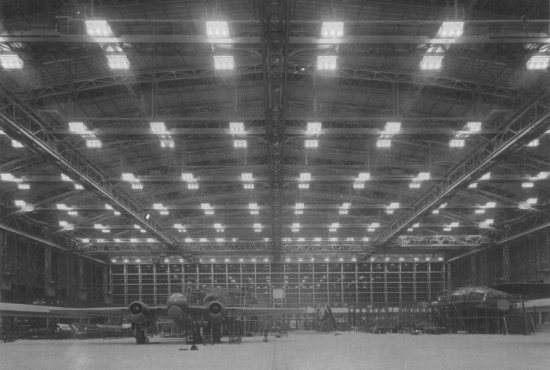 |
The high level nozzles of 4 of the special
heater
units can be
seen by close inspection of the left hand wall
of the hangar.
| A separate boiler house building sited
adjacent to the
Assembly
Hall building housed the heat generation plant. Four
economic
type steam boilers fed the heater
units with steam and condense. |
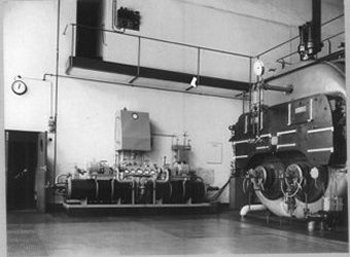 |
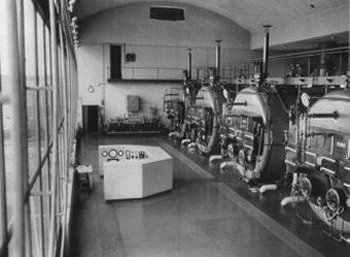 |
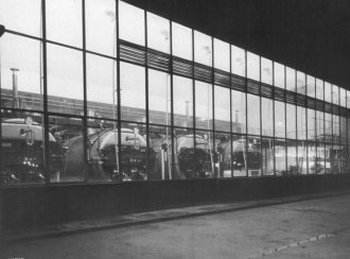 |
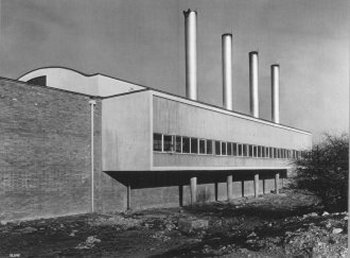 |
|
Due to
the large size, costs and
construction
period of this Assembly Hall project, two major
contracts were awarded for the erection of the Heating &
Ventilation services. |
| The Brabazon Aircraft |
| Sadly, the Brabazon aircraft became a “white elephant” as the airlines BOAC and BEA never expressed any serious interest in ordering the aircraft. Only the first prototype was built and flew, but was broken up in October 1953. A flying life of 400 hours over only 4 years. A second prototype was commenced but progressed no further than an incomplete fuselage before also being broken up. |
Specifications
Passengers:
50-180
Engines: 8 x Bristol Centaurus, 1864kW (2,650 hp)
Wingspan: 70.1m 230 ft
Length: 53.95m 177 ft
Height: 15.24m 50 ft
Wing area: 493.95m² 5,317 sq ft
Empty weight: 65816kg 145,100 lb
takeoff weight: 131542kg 290,000 lb
Max speed: 483kph,
Cruise speed: 402kph
Ceiling: 7620m
Range: 8850km 5,500 miles
A
selection of pictures from its assembly
to flight
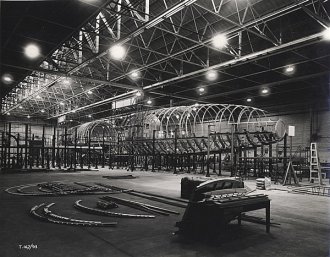 |
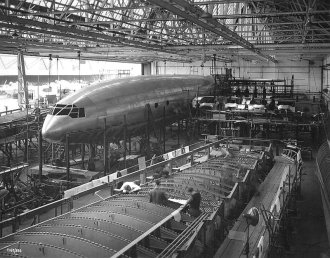 |
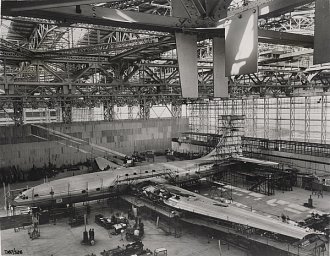 |
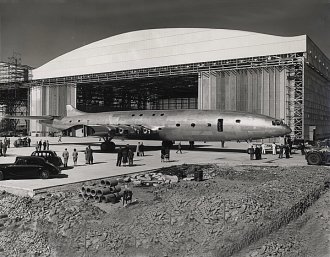 |
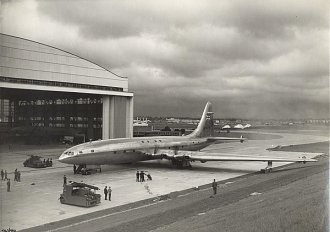 |
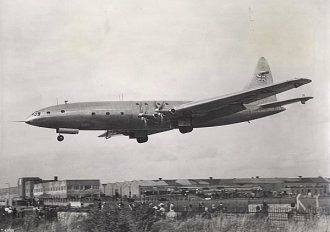 |
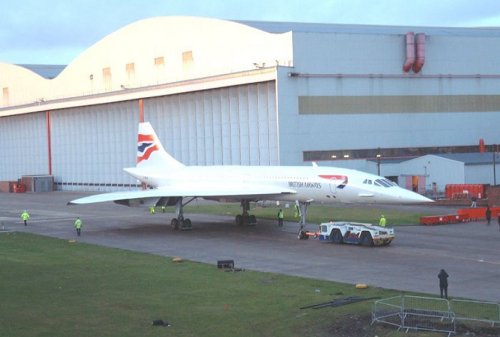 The
original
Assembly
Hall / Hangar building has now past its half centenary and is
still very much in use, as this recent photograph shows.
|
The Brabazon Hanger Fire c1957
All five colour photos were kindly provided by Steve Hancock
whose father Len Hancock took the photographs whilst
employed by the Bristol Aeroplane Company
This fire occurred about 1957 and started in the roof structure,
obviously someone didn't take any notice of the Notice
No emergency fire precautions in those days. Imagine workers these
days being allowed to stand and watch the fire. I don't think so.
The fire now seems to be taking hold. Notice the flames starting to show.
Look at the right staircase, still someone making their way out of the building.
Note the fireman on the turntable ladder. Health & Safety officers
these days would have had apolexy just looking at him.
This unfinished Bristol Britannia aircraft had been pushed out of the hanger for its own safety.
Notice the the towing (tug) tractor appears again in this photo.
Another 6 photos of the hangar fire, this time in black & white
kindly provided by Colin Otridge. These photographs were rescued
from the bin into which they had been put with other rubbish.
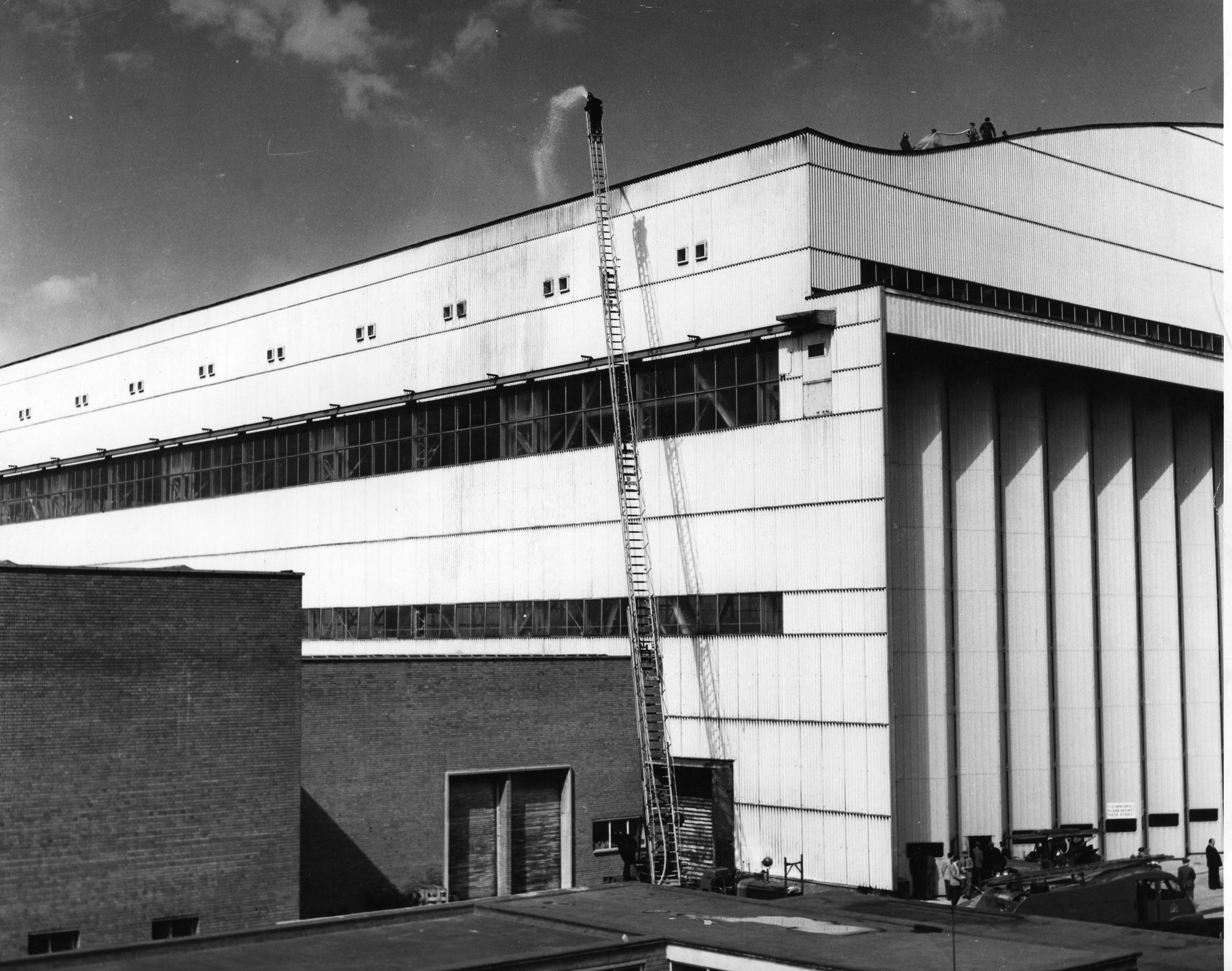
This fireman appears to be fighting the fire from the top of a quadruple section extension ladder.
Is that people on the roof of the hangar building
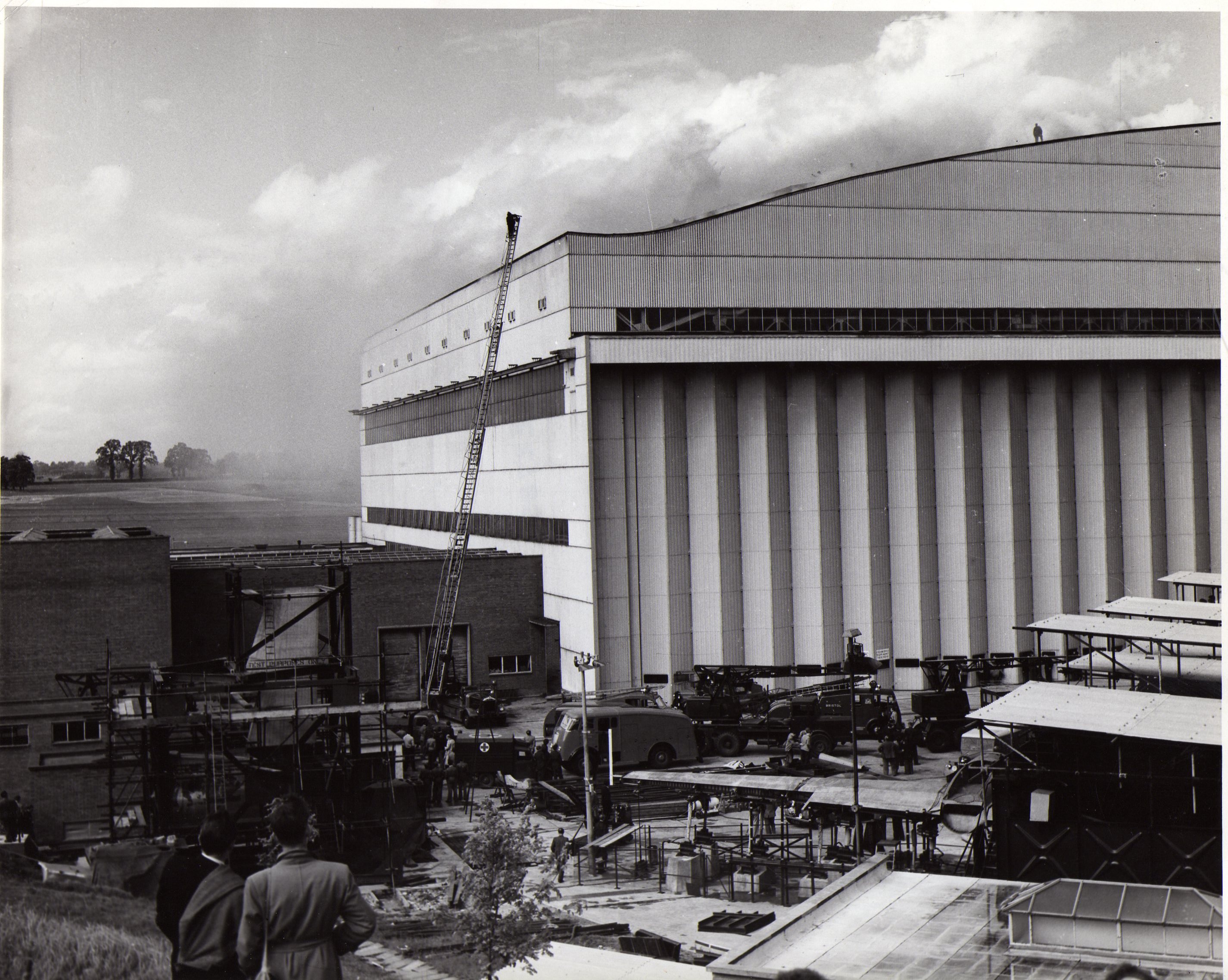
I wonder if the Fireman had first prepared his risk assessment and method statement.
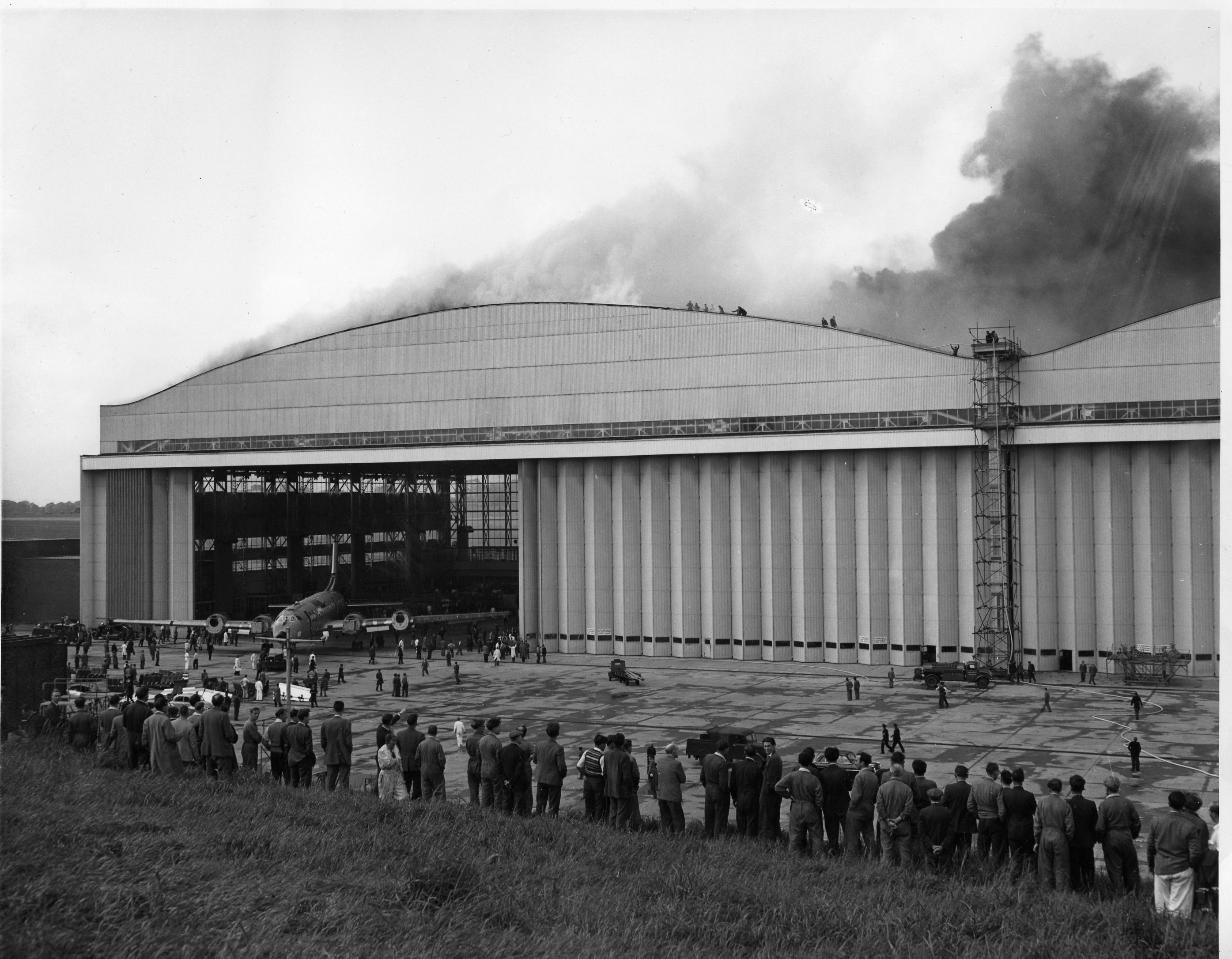
The unfinished Britannia aircraft is being towed outside of the hangar.
A grandstand view for the large numbers of workers as spectators.
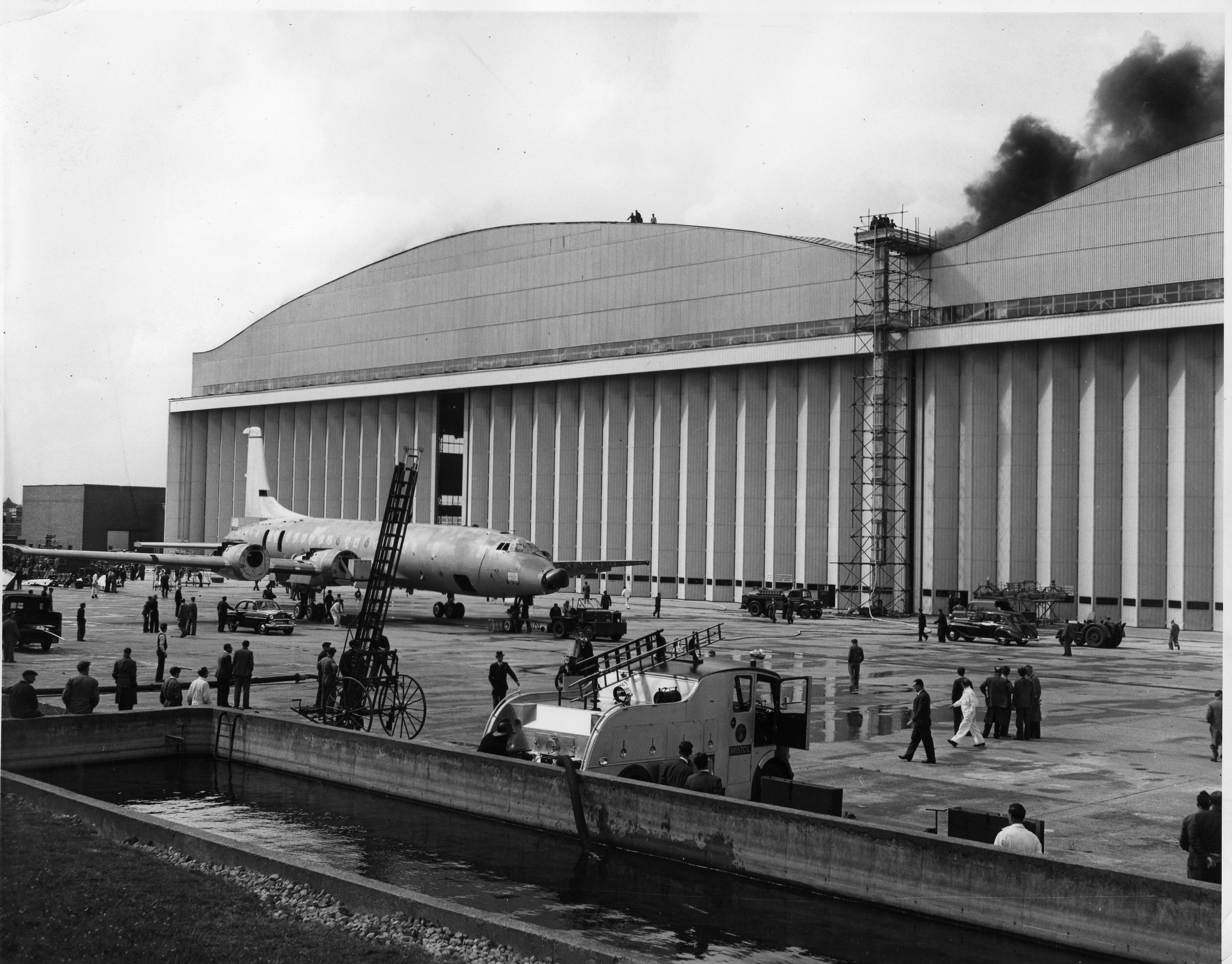
All the workmen stood around seem to be just looking or strolling about.
No one seems to be particularly fearful about their safety.
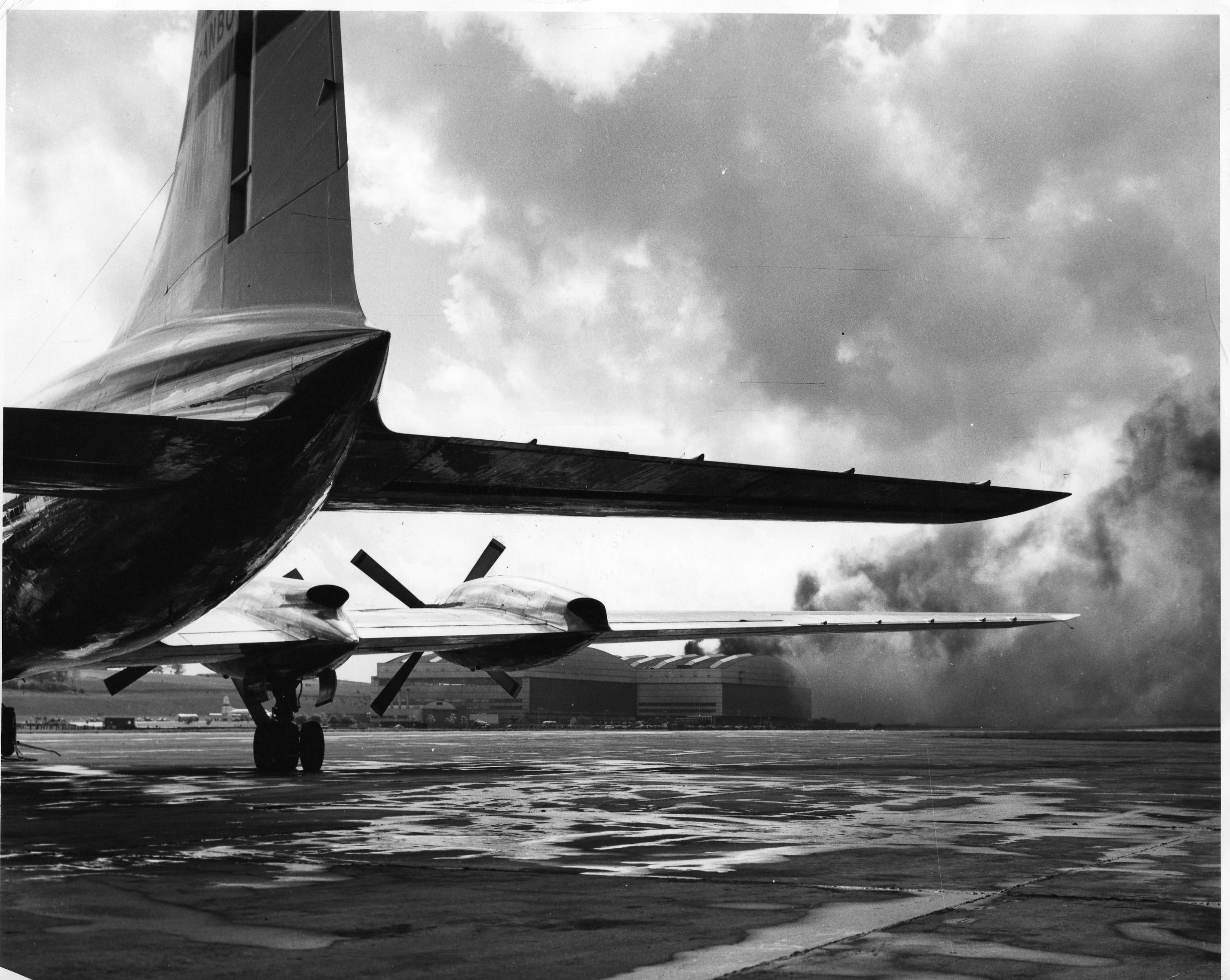
A startling and dramatic view across the tarmac showing
the massive amount of smoke generated by the fire.
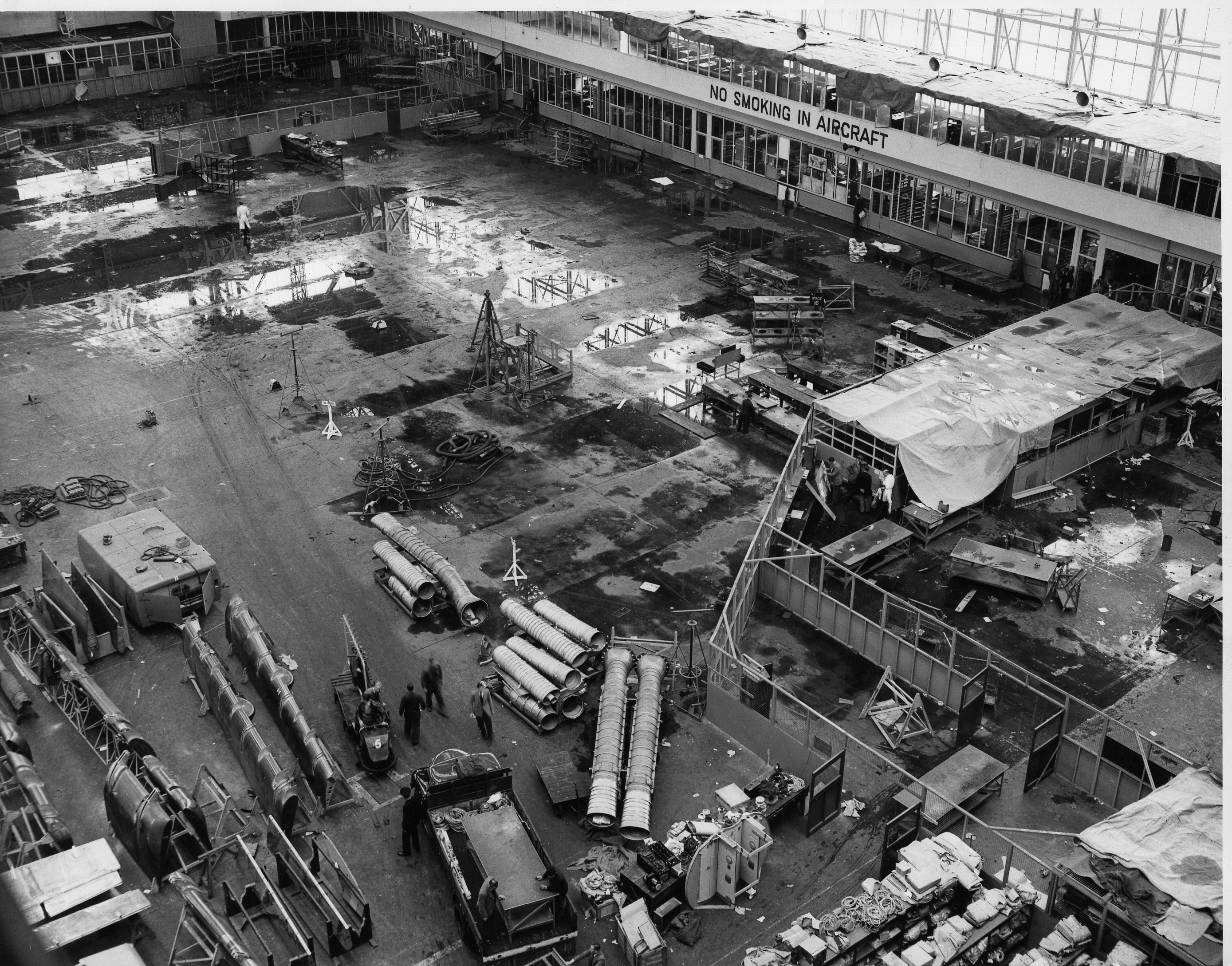
This aeriel view shows the amount of water damage from the fire hoses that has occured.
return to top of page
June 2004
